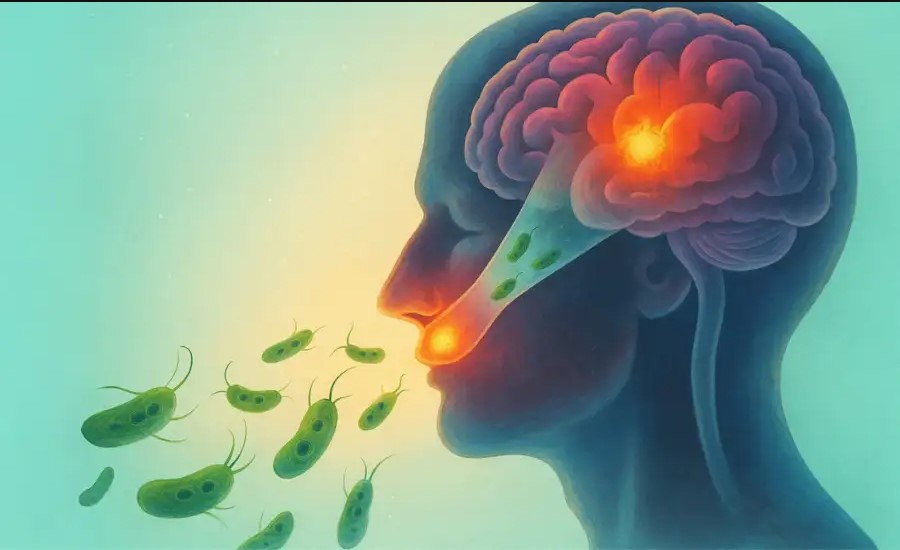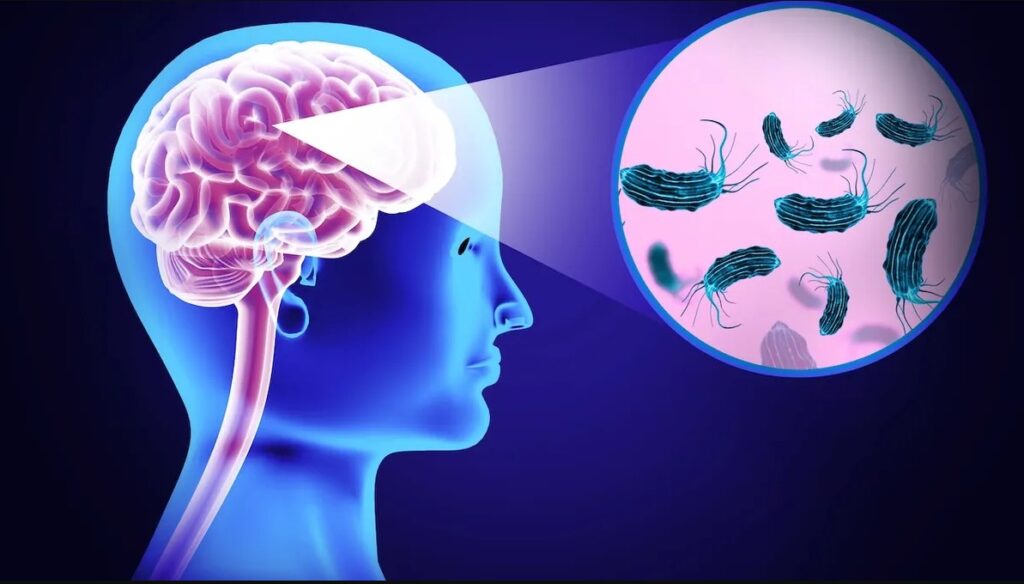Warm summers in India often lead to increased swimming and water activities. But did you know that a rare, deadly organism called the brain-eating amoeba (scientific name: Naegleria fowleri) can lurk in warm freshwater? Though rare, this microscopic killer has claimed lives in India and other tropical countries. Here’s everything you need to know to stay safe.
🦠 What is Naegleria fowleri?
Naegleria fowleri is a free-living amoeba found in warm freshwater environments like:
- Lakes
- Rivers
- Hot springs
- Poorly maintained swimming pools
- Tap water (if not properly treated)
This amoeba is deadly because it can cause a brain infection known as Primary Amebic Meningoencephalitis (PAM).
😱 How Does It Infect Humans?
The amoeba enters through the nose when people swim, dive, or bathe in contaminated water. From the nose, it travels to the brain and starts destroying brain tissue.
⚠️ Important: You cannot get infected by drinking contaminated water. Infection occurs only through the nose.
🧩 Symptoms of Brain-Eating Amoeba Infection
Symptoms usually begin 1 to 12 days after exposure and progress rapidly:
- Severe headache
- High fever
- Nausea and vomiting
- Stiff neck
- Confusion
- Loss of balance
- Seizures
- Hallucinations
- Coma
Sadly, the infection is almost always fatal.
Why is the Brain-Eating Amoeba Dangerous in the USA?
While Naegleria fowleri infections are rare, the USA sees some of the most well-documented cases, especially in Southern states. Here’s why:
☀️ 1. Hot Climate in Southern States
States like Florida, Texas, Arizona, and Louisiana have warm climates with high water temperatures in lakes and rivers, which create the perfect environment for Naegleria fowleri to thrive.
🌊 2. Freshwater Recreation Culture
In the U.S., especially in southern states, people frequently engage in:
- Swimming
- Diving
- Water skiing
- Wakeboarding
These activities force water up the nose, increasing the risk of infection.
🏊 3. Untreated or Poorly Maintained Water Sources
Though rare, some cases are linked to:
- Warm lakes and ponds
- Geothermal (natural hot spring) areas
- Inadequately chlorinated pools or splash pads
- Tap water used in nasal rinsing (notably in Louisiana)
📈 4. Rising Cases Due to Climate Change
Warmer temperatures are expanding the amoeba’s range further north. Cases have recently appeared in states like:
- Nebraska
- Indiana
- Minnesota
This suggests that Naegleria fowleri is spreading beyond the typical southern U.S. zone.
🧪 5. Fatal and Fast-Acting
- The infection, Primary Amebic Meningoencephalitis (PAM), progresses rapidly.
- Over 97% of U.S. cases are fatal.
- Even with advanced medical facilities, survival is extremely rare.
📊 U.S. Case Statistics (CDC Data):
- ~3–5 cases per year on average.
- Nearly all have resulted in death.
- Most patients are children or young adults exposed during summer.
✅ How Americans Can Stay Safe:
- Avoid jumping or diving into warm freshwater.
- Use nose clips while swimming in lakes or rivers.
- Avoid nasal rinsing with tap water—use distilled, sterile, or boiled water.
- Always chlorinate and maintain private swimming pools and hot tubs.
✅ Prevention Tips
Although it’s rare, prevention is crucial:
❌ Avoid swimming in warm freshwater bodies, especially during high temperatures.
👃 Use nose clips or hold your nose shut while swimming.
💧 Don’t stir up sediment in shallow warm water areas.
🚱 Use boiled, distilled, or sterile water for nasal rinsing (like using a neti pot).
🧼 Keep pools and tanks properly chlorinated and maintained.
📉 How Common Is It?
- Extremely rare: Only a few hundred cases have been reported worldwide.
- But it’s almost always fatal (over 95% fatality rate).
- Quick diagnosis and treatment are critical, though still not very effective in most cases.
🧪 Is There a Cure?
There is no guaranteed cure, but some patients have survived with aggressive treatment, including:
- Antifungal and antibiotic meds (e.g., Amphotericin B, miltefosine)
- Induced hypothermia (cooling the body)
- Early diagnosis and intensive care
Yes — the brain-eating amoeba (Naegleria fowleri) can be dangerous worldwide, but only under certain conditions. It’s not common everywhere, but in the right environment, it can become a serious threat.
🌍 Is Naegleria fowleri Dangerous for the Whole World?
🦠 Yes, But Only in Specific Conditions:
Naegleria fowleri thrives in:
- Warm freshwater (above 25°C or 77°F)
- Low water flow or stagnant water
- Untreated water (not chlorinated or filtered)
So, it’s more dangerous in certain regions, but with global warming, the risk is slowly expanding worldwide.
🗺️ Regions Most at Risk:
🔥 High-Risk Countries:
- India
- United States (especially the South)
- Pakistan
- Bangladesh
- Thailand
- Australia
- Mexico
- Costa Rica
- Middle East (Iraq, Iran, Kuwait, etc.)
These areas have the right climate, freshwater exposure, and sometimes poor water treatment in public areas.
❄️ Low-Risk Countries:
- Cold climate countries (e.g., Canada, Russia, Scandinavian nations)
- Northern Europe, high-altitude regions
In cold water, the amoeba cannot survive or reproduce effectively.
🌡️ Why Global Risk is Growing
Climate change is heating up freshwater sources around the world. As global temperatures rise:
- Lakes in Europe, China, and North America are getting warmer.
- The amoeba may spread to new areas where it never existed before.
🌐 Key Takeaway:
✅ Yes, it’s dangerous — but not everywhere and not equally.
❗ Warm freshwater + poor water hygiene = risk zone
💧 But with proper awareness and water safety, it’s preventable!
Would you like a world map-style infographic showing the danger zones? I can design one for your blog or social media.








